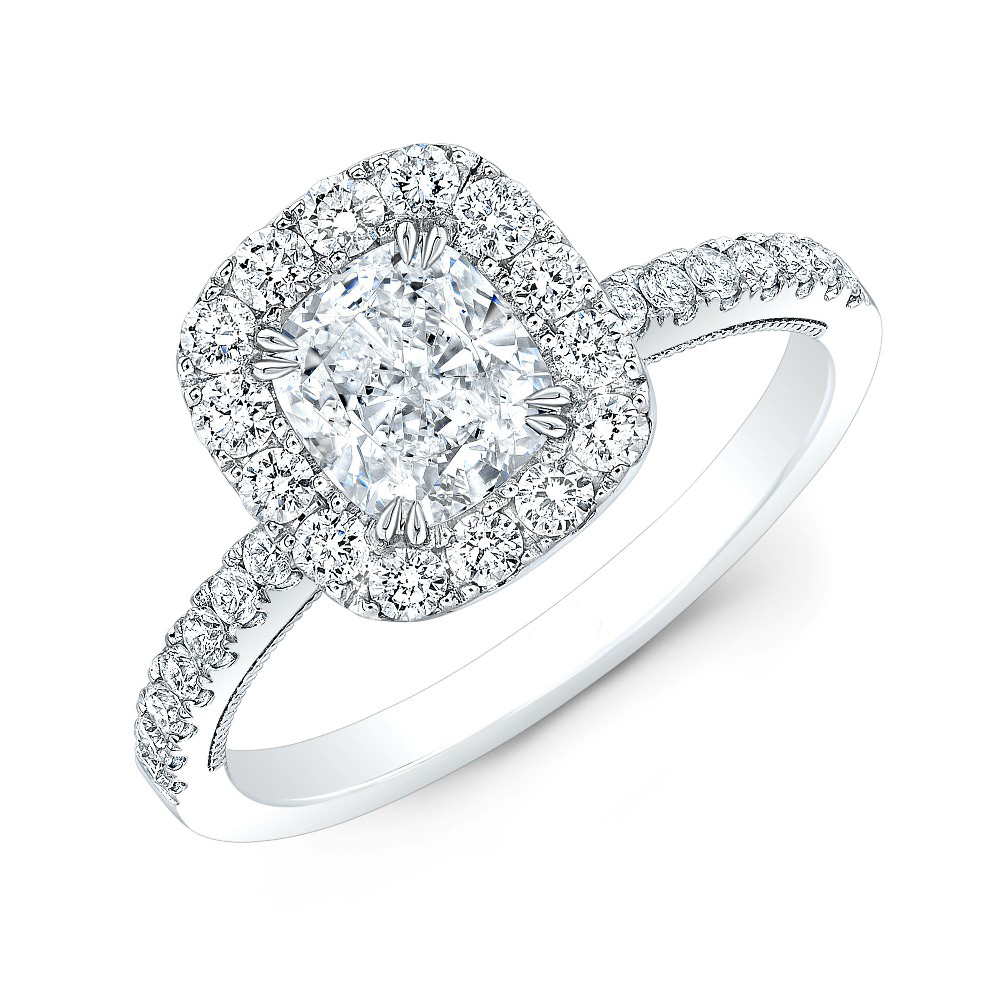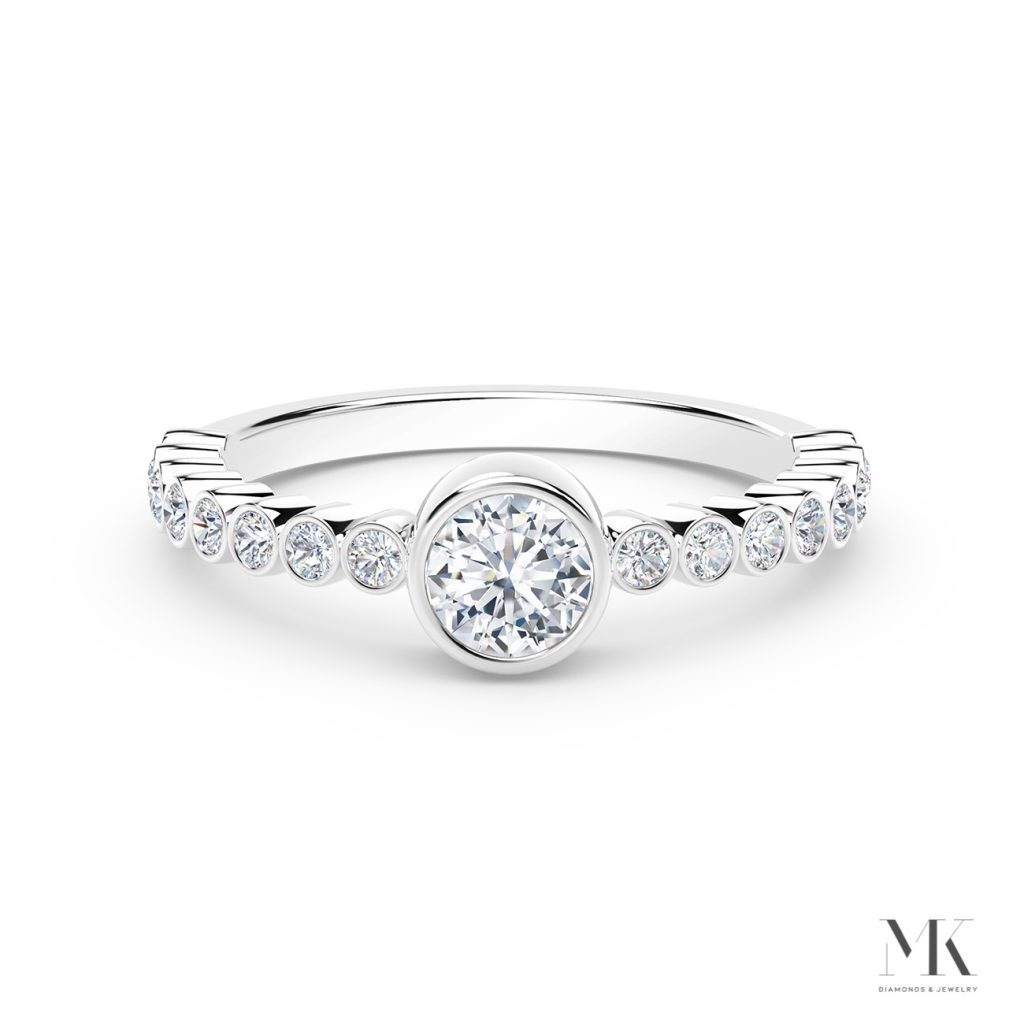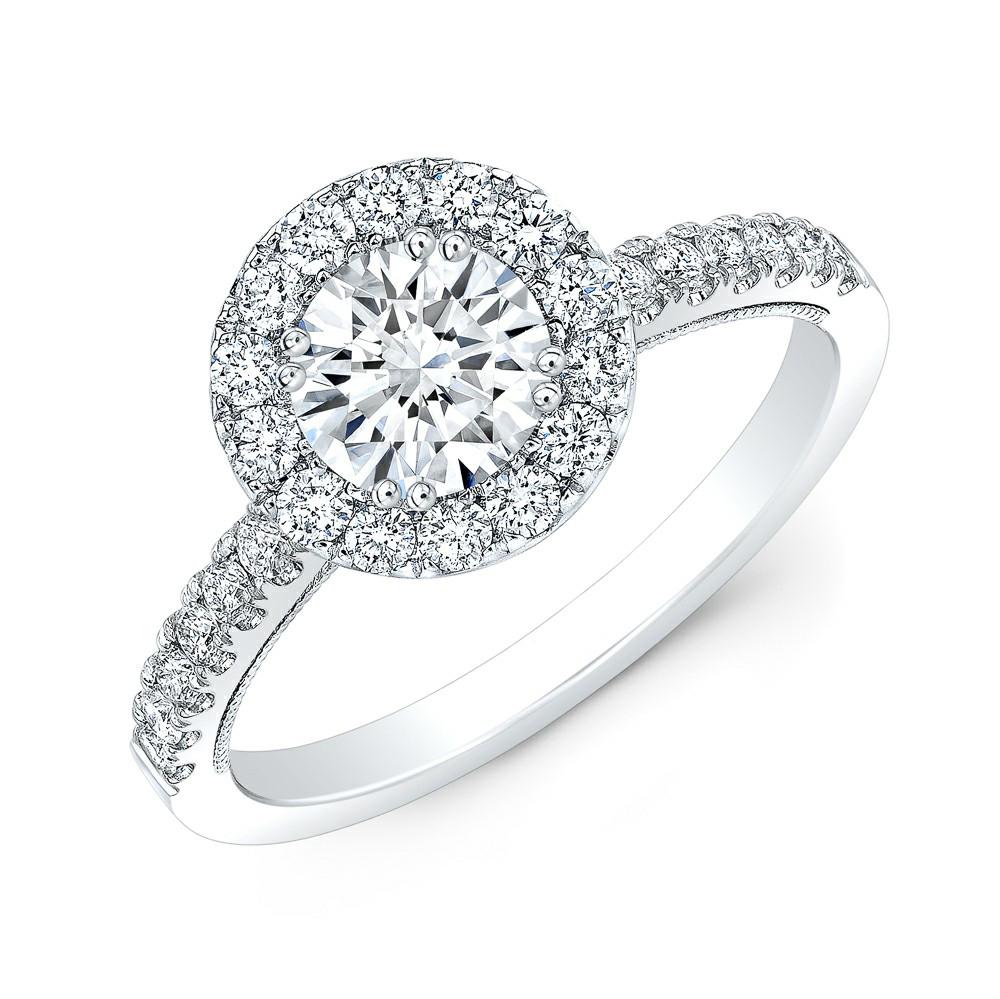Round vs. Cushion Cut Diamonds
Round and cushion-cut diamonds are both dazzling choices for diamond jewelry. They’re also quite popular at the moment, so chances are you’ve seen plenty of these shapes if you’re currently shopping for an engagement ring, a diamond pendant, or any other diamond design.
While round and cushion-cut diamonds are similarly popular, they have a number of differences that can affect which you prefer. These shapes differ in style, sparkle, setting options, and price. They also show off qualities like color and clarity differently, which can affect what you want to prioritize as you pick out your diamond.
By understanding the differences between round and cushion-cut diamonds, you can easily make an educated decision when choosing between the two. To help you do just that, here is a comprehensive look at round versus cushion cut diamonds.
Round Cut vs. Cushion Cut: Shape Characteristics
We’ll begin our guide with an overview of the characteristics of each of these diamond shapes.
The round cut is a highly brilliant shape that looks round when viewed from above. It gets its brilliance from its meticulously arranged facets. Round brilliant-cut diamonds have 58 facets arranged exactingly across their pavilion, girdle, and crown. A well-cut round brilliant diamond is perfectly symmetrical and impressively sparkly.
The modern cushion cut diamond shape is an evolution of an antique diamond cut, the old mine cut. Cushion-cut diamonds have the same shape as old mine cut diamonds. When viewed from above, they look rectangular with rounded corners, much like a cushion. What makes a cushion cut diamond different from an old mine cut diamond is its faceting pattern. Cushion cuts have an adapted version of the round brilliant cut’s facet pattern. This adapted faceting features larger facets, making cushion cut diamonds slightly less sparkly compared to round diamonds.
One thing to note about cushion cuts is how much their faceting can vary. Unlike the highly standardized round brilliant cut, the cushion cut can have a range of different faceting proportions and arrangements. The two most common are the cushion brilliant cut and the modified cushion cut. Cushion brilliant cuts have a highly symmetrical look, with larger facets that could be described as chunky. Modified cushion cuts have an extra row of facets on their pavilion, which gives them a more scattered appearance that’s often likened to crushed ice.

Round Cut vs. Cushion Cut: Style Comparison
Round-cut diamonds are classic and elegant. Their lovely symmetry, stunning sparkle, and enduring popularity give them a timeless quality that appeals to a huge range of people.
Cushion cut diamonds are also considered classic in style, yet they have a vintage flair due to this shape’s antique origins. Additionally, compared to other rectangular or square diamond shapes, cushion cuts look rather romantic. The rounded edges of the cushion-cut diamond give it a softness that can’t be found in sharper rectangular shapes, such as emerald-cut diamonds, radiant-cut diamonds, Asscher-cut diamonds, and princess-cut diamonds.
Round Cut vs. Cushion Cut: Sparkle
Round brilliant-cut diamonds are beloved for their incredible sparkle. Thanks to their carefully arranged facets, round brilliant cut diamonds have the most brilliance of any diamond shape.
Cushion-cut diamonds are also beautifully sparkly and brilliant, but they are not quite as brilliant as round diamonds due to their larger facets. Cushion diamonds also have a different type of scintillation compared to round brilliant diamonds. Round and cushion-cut diamonds both have high levels of brilliance (white sparkle) and fire (rainbow sparkle). But cushion cut diamonds tend to have more fire than any other diamond shape, including round. So, if you’re a fan of colorful sparkle over white sparkle, the cushion cut may catch your eye.

Round Cut vs. Cushion Cut: Setting Options
As you decide whether you prefer round or cushion-cut diamonds, don’t neglect to consider how each shape will look when set in jewelry. If you’re looking for a center diamond for a very simple design, such as a prong-set solitaire diamond ring, your diamond will largely define the style of your piece. But if you prefer more intricate jewelry, you want to think about how the style of your center diamond will look within your favorite settings.
In general, cushion-cut diamonds tend to look fantastic in classic and vintage-inspired designs, while round-cut diamonds look incredible in classic and modern designs. Yet, either shape can shine in any style depending on the specific design. At the end of the day, this is an aesthetic consideration that comes down to personal preference.
Round Cut vs. Cushion Cut: Diamond Selection Considerations
Due to their unique shapes and faceting patterns, cushion-cut and round diamonds can show certain qualities differently. Notably, round cut diamonds tend to hide flaws better than cushion cut diamonds. The many small facets of round diamonds are good at camouflaging tiny inclusions inside a diamond, which means that round diamonds with lower diamond clarity grades can still look quite high quality. Another notable quality difference between these two diamond shapes concerns diamond color. Cushion-cut diamonds show off color very well. This is ideal if you’re shopping for a colorful gemstone, but not if you’re shopping for a colorless diamond.
The way these shapes present color and clarity shouldn’t necessarily affect which diamond shape you prefer, but it is something you should keep in mind when you’re shopping for your diamond. If you decide you want a cushion cut diamond, you will probably want to prioritize choosing an eye-clean diamond (a diamond with no flaws visible to the naked eye) and a slightly higher color grade.
Another thing to consider if you’re shopping for a cushion-cut diamond is how much variety you’ll find in terms of proportions. Cushion-cut diamonds can range from being perfectly square to highly elongated. If you’d prefer a square cushion cut, look for diamonds with length-to-width ratios that range from 1.00 to 1.05. If you want a more elongated look, anything over 1.10 will be distinctly rectangular.

Round Cut vs. Cushion Cut: Price Comparison
Round brilliant-cut diamonds are significantly more expensive per carat than cushion-cut diamonds. How much more expensive? On average, a round diamond will cost 25% more than a cushion-cut diamond with the same carat weight and qualities.
Round is actually the most expensive diamond shape, so round diamonds are not only pricier than cushion cut diamonds, but also every other diamond shape. Round diamonds are more expensive than other shapes in part because they cost more to manufacture. Cutting a round shape requires more rough gemstone loss, making it more expensive. Round diamonds are also more costly due to high demand. Round has been the most popular diamond shape for over a hundred years and this enduring popularity has earned it a slightly steeper price tag.
So, round diamonds are more expensive than cushion cut diamonds, but should you always choose a cushion cut diamond if you’re on a budget? Not necessarily.
If you have a smaller budget and you’ve fallen in love with the cushion cut, by all means, choose the shape. You can consider its more affordable price per carat an added bonus. If you’ve decided you like round and cushion-cut diamonds equally, the lower price of cushion-cut diamonds could sway you toward the shape and make you feel excited about choosing it for your center stone. But if you’ve realized you prefer round-cut diamonds, don’t get a cushion-cut center stone based on price alone. It’s best to make sure you choose a diamond with the style and sparkle you love, even if that means choosing something with slightly lower carat weight.


